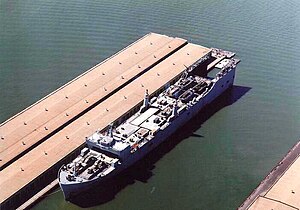
USNS Comet (T-AK-269), later T-LSV-7, later T-AKR-7, later SS Comet, is a vehicle landing ship built for the United States Navy. The lone ship of her class, she is named for the comet, and is the fourth U.S. Naval vessel to bear the name.

USNS Sea Lift (T-LSV-9) was a roll on/roll off (Ro/Ro) cargo ship built for the United States Navy's Military Sea Transportation Service (MSTS), currently the Military Sealift Command (MSC). She became the first ship of Ro/Ro-type to deliver cargo to Vietnam during the war in Indochina.
Lykes Bros. Steamship Co., also called Lykes Lines, was a cargo shipping company acting from the beginning of the 20th century to 2005 having its main business in the trade to and from the United States.

SS Grand Canyon State (T-ACS-3) is a crane ship in ready reserve for the United States Navy. The ship was named for the state of Arizona, which is also known as the Grand Canyon State.

SS Equality State (T-ACS-8) was a crane ship of the United States Navy. The ship was named for the state of Wyoming, which is also known as the Equality State. She was scrapped in June 2019.

USTS Kennedy(T-AK-5059), callsign KVMU, IMO number 6621662, is a former commercial freighter and a current training vessel of the United States Maritime Service.
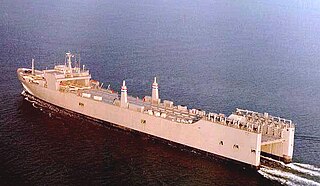
SS Cape May (T-AKR-5063) is a steam turbine powered heavy-lift Seabee barge carrier, one of two ships of her type in the Military Sealift Command's Ready Reserve Force.

SS Cape Intrepid was originally laid down in 1975 as SS Arizona a Type C7 ship intended for both commercial or military use. The ship was launched in 1975 and turned over to the Maritime Administration for commercial use and acquired by the Lykes Brothers and named the SS Lipscomb Lykes. On June 8th 1976 she was removed from commercial duty and reacquired by the United States Navy and renamed USNS Jupiter to serve alongside USNS Mercury. On 8 June 1976 she was transferred to Military Sealift Command, and renamed the SS Cape Intrepid. Since then the ship has been active in transport roles including a long term attachment to the 833rd transport regiment. She is currently in reserve status and can be activated if called upon in 5 days as part of the ready reserve fleet. The ship is currently moored in Tacoma, Washington.
The SS Cape Inscription (AKR-5076) was originally launched in 1975 as the SS Maine, a Type C7 commercial ship. The States SS company took the first contract in 1976 and it operated until January 29, 1979, when it was purchased by Whitney National Bank, it was then leased to Lykes Brothers steamship company and renamed the SS Tyson Lykes on February 23, 1979. On October 20 the Lykes Brothers purchased the ship from the Whitney National Bank. Later on September 1987 the ship was reacquired from its commercial roles and brought back under military control under the Maritime Administration and renamed the SS Cape Inscription. Since then it has been kept in ready reserve status and used occasionally for heavy lifting operations to European theaters to have the equipment air-lifted to active engagements.

The SS Cape Isabel (AKR-5062) was originally launched in 1976 as the SS Nevada, a Type C7 commercial ship. The States SS company took the first contract in 1976 and it operated until it was transferred to Lykes Brothers steamship company and renamed the SS Charles Lykes. Later the ship was reacquired from its commercial roles and brought back under military control via the Maritime Administration and renamed the Cape Isabel. Since then it has been kept in ready reserve status and used occasionally for heavy lifting operations to European theaters to have equipment air-lifted to active engagements. It has heavily participated in Operation Enduring Freedom ferrying goods across the Atlantic to staging points in Europe. As of August 2021, the ship is undergoing recommissioning at Vigor Shipyards in Portland, Oregon.

For MV Cape Texas, a World War II Type C1-A, see Type C1 ships

MV Cape Taylor (T-AKR-113) is a roll-on/roll-off (RO/RO) ship with the Ready Reserve Force (RRF) of the United States Department of Transportation's Maritime Administration (MARAD). As of 31 December 2014, her homeport is the Port of Houston in Houston, Texas, and she is on ROS-5 status; she is able to be fully operational within 5 days of being activated. When activated, she becomes part of the United States Navy's Military Sealift Command (MSC).
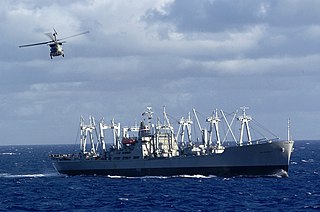
SS Cape Girardeau is a Modular Cargo Delivery System (MCDS) ship in the National Defense Reserve Fleet. The ship is named for Cape Girardeau, Missouri.
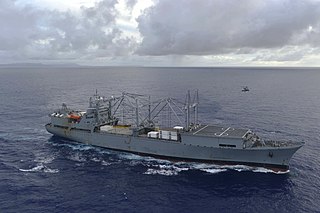
The Type C5 ship is a United States Maritime Administration (MARAD) designation for World War II breakbulk cargo and later a container ship for containerization shipments. The first type C5-class ship was a class of ships constructed and produced in the United States during World War II. The World War II C5-class ship was dry bulk cargo ship built by Bethlehem Steel in Sparrows Point, Maryland. Bethlehem Steel built eight ships in this bulk cargo class and four orders were canceled. The C5-class ship has a 24,250 DWT and was 560 feet (170 m) long. The C5 was mainly used as iron ore carriers. The C5 was needed to replace other ships that sank during World War II. First in her class was SS Venore, USMC #1982, delivered on 20 July 1945. The Type C5-class ship designed to fill the need to move iron ore from Santa Cruz, Chile, to Sparrows Point, Maryland, through the Panama Canal, a round-trip of 8,700 nautical miles . Post World War II, four ships were given C5 class type C5-S-78a, these were roll-on/roll-off container ship built by Ingalls Shipbuilding, Inc. of Pascagoula, Mississippi and operated by the Moore-McCormack Lines. The C5-S-78a had a deadweight tonnage of 16,000 tons.

Type C8-class ships are a type of Heavy Lift Barge Carrier. Type C8 ships were the 8th type of ship designed by the United States Maritime Commission (MARCOM) in the late 1960s. As done with the Type C1 ships and Type C2 ships, MARCOM circulated preliminary plans for comment. The design presented was not specific to any service or trade route. Type C8 ships measuring 876 feet (267 m) from stem to stern, and designed to make 16.2 knots.

SS Cape Mendocino (T-AKR-5064) is a steam turbine powered heavy-lift Seabee barge carrier, one of three ships of her type in the Military Sealift Command's Ready Reserve Force.
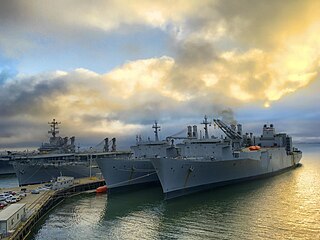
Pacific Reserve Fleet, Alameda was a part of the United States Navy reserve fleets, also called a mothball fleet, that was used to store the many surplus ships after World War II. The Pacific Reserve Fleet, Alameda was part of the former Naval Air Station Alameda in Alameda, California, in the San Francisco Bay. Some ships in the fleet were reactivated for the Korean War and Vietnam War.

The James River Reserve Fleet (JRRF) is located on the James River in the U.S. state of Virginia at near Fort Eustis. James River Reserve Fleet, a "ghost fleet", is part of the National Defense Reserve Fleet. The Reserve Fleet ships in storage, called "mothballed", that can be ready for use if needed. Many are awaiting scrapping due to the age or condition of the ship. Some ships are used for target practice or as artificial reefs. A few ships became museum ships and other sold to private companies. Ships can be readied for use in 20 to 120 days during national emergencies or natural disaster. The U.S. Department of Transportation's Maritime Administration (MARAD) provides oversight of the James River Reserve Fleet. For the United States Navy ships the United States Navy reserve fleets stored these ships and submarines.
